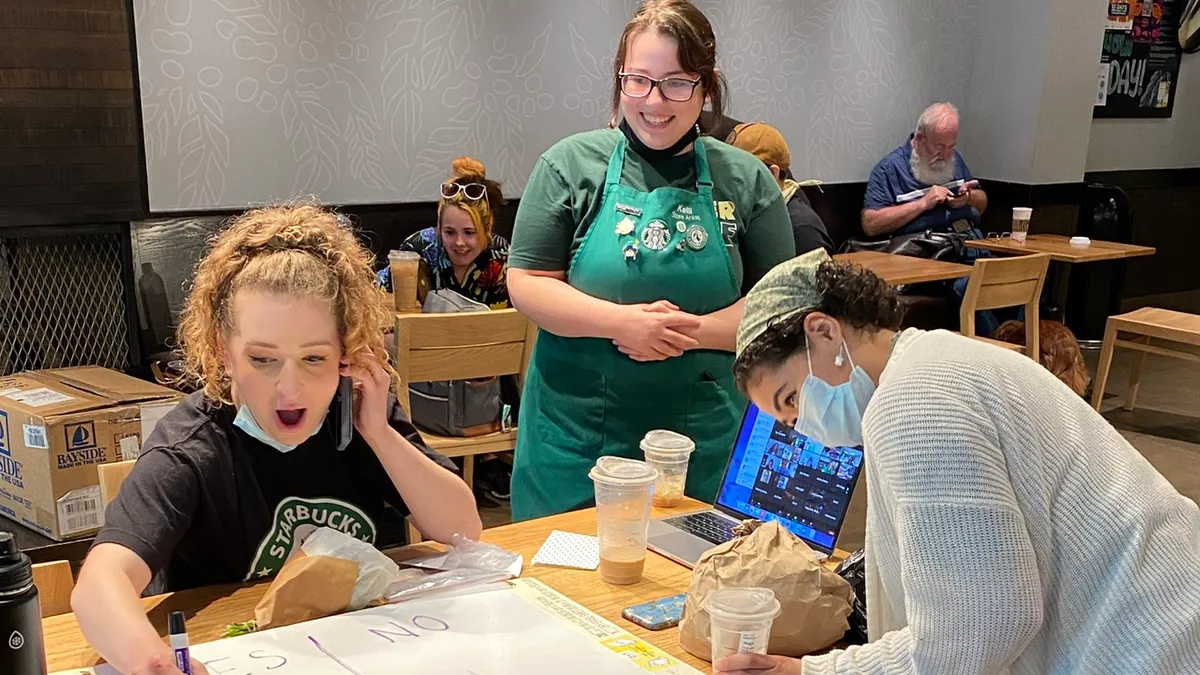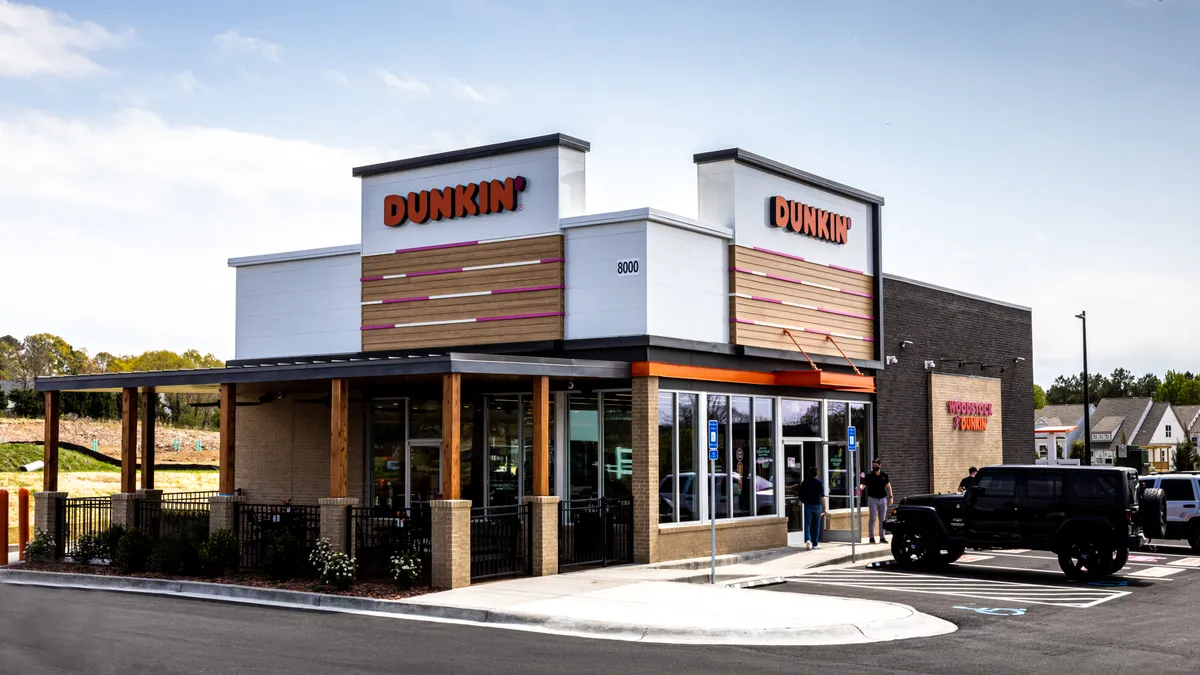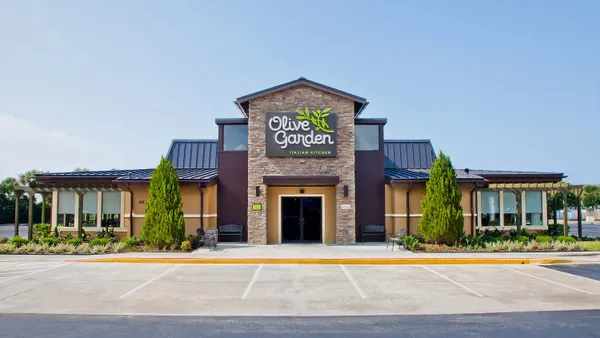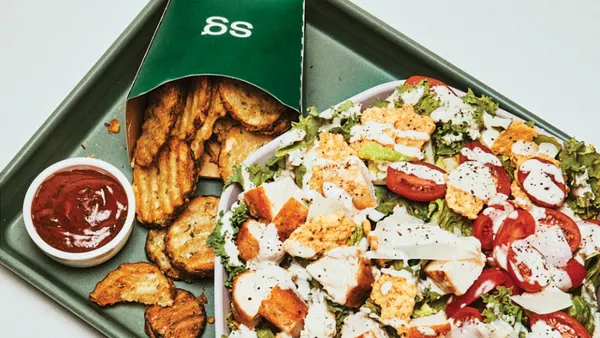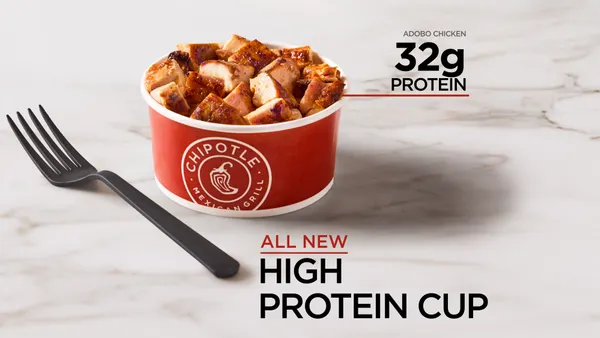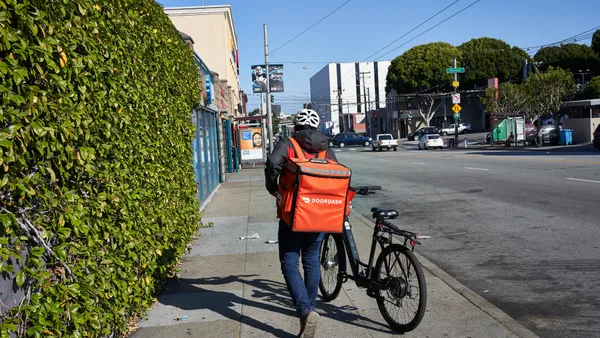Dive Brief:
- A U.S. Labor Department report revealed that full-service restaurants raised their prices by 0.5% in December, the biggest restaurant pricing increase in more than seven years, according to Bloomberg.
- Limited-service restaurant prices also jumped by 0.4%, the highest increase in nearly a year.
- Simultaneously, grocery costs are rising at a slower pace.
Dive Insight:
It's a tricky environment for restaurants as they contend with rising labor and tightening margins. Food costs alone are up 0.4%, the most since May 2014. But by taking these pricing increases, restaurants also are making it harder for consumers to dine out. The core consumer price increase is up just 0.2%. With such a widening gap between costs and consumer index, many consumers will no doubt reduce their restaurant visit frequency, particularly as grocery costs rise at a slower pace.
This trajectory has already presented itself as a concern for restaurants, as The NPD Group data revealed that U.S. consumers are already eating out less often. The average American consumer has 1,473 eating occasions on a per capita basis annually, down 3.8% compared to 2008.
NPD analyst David Portalatin told NBC News price-conscious baby boomer consumers have reduced their eating-out occasions, bringing down the overall average. Millennials, which are the biggest demographic to order delivery, haven't made up for the loss of baby boomers either. According to research from wellio, it is almost five times more expensive to order restaurant delivery than it is to cook at home. Younger consumers strapped with student debt and tight budgets also may deprioritize restaurant spending if prices continue to increase.
Another concern for restaurants is the potential for a recession, when consumer spending will become even more conservative. According to a Duke University/CFO Global Business Outlook survey, nearly half of U.S. chief financial officers believe the end of 2019 holds the start of a recession, while 80% expect a recession by the end of 2020.
It’s not all doom and gloom for the restaurant industry, however. Just two years ago, Americans started spending more on eating out than they did on food at home — the first time ever. Also, higher prices lead to higher sales and tickets.
To engage deal-seeking consumers and avoid a mass traffic exodus, restaurants are pulling out all the promotional stops. Despite the rise in average menu costs, for example, the industry has been fighting an intense battle over value throughout the past year. Operators are attempting to balance their high/low pricing structures to reignite traffic without eroding profits.
Restaurant companies also are going all-in on convenience initiatives — delivery, carryout, technology that allows customers to pre-order and pre-pay for their dine-in meal and so on. As competition continues to heat up, convenience will emerge as a major advantage, perhaps even causing some consumers to forgive higher prices in exchange for ease and accessibility.


